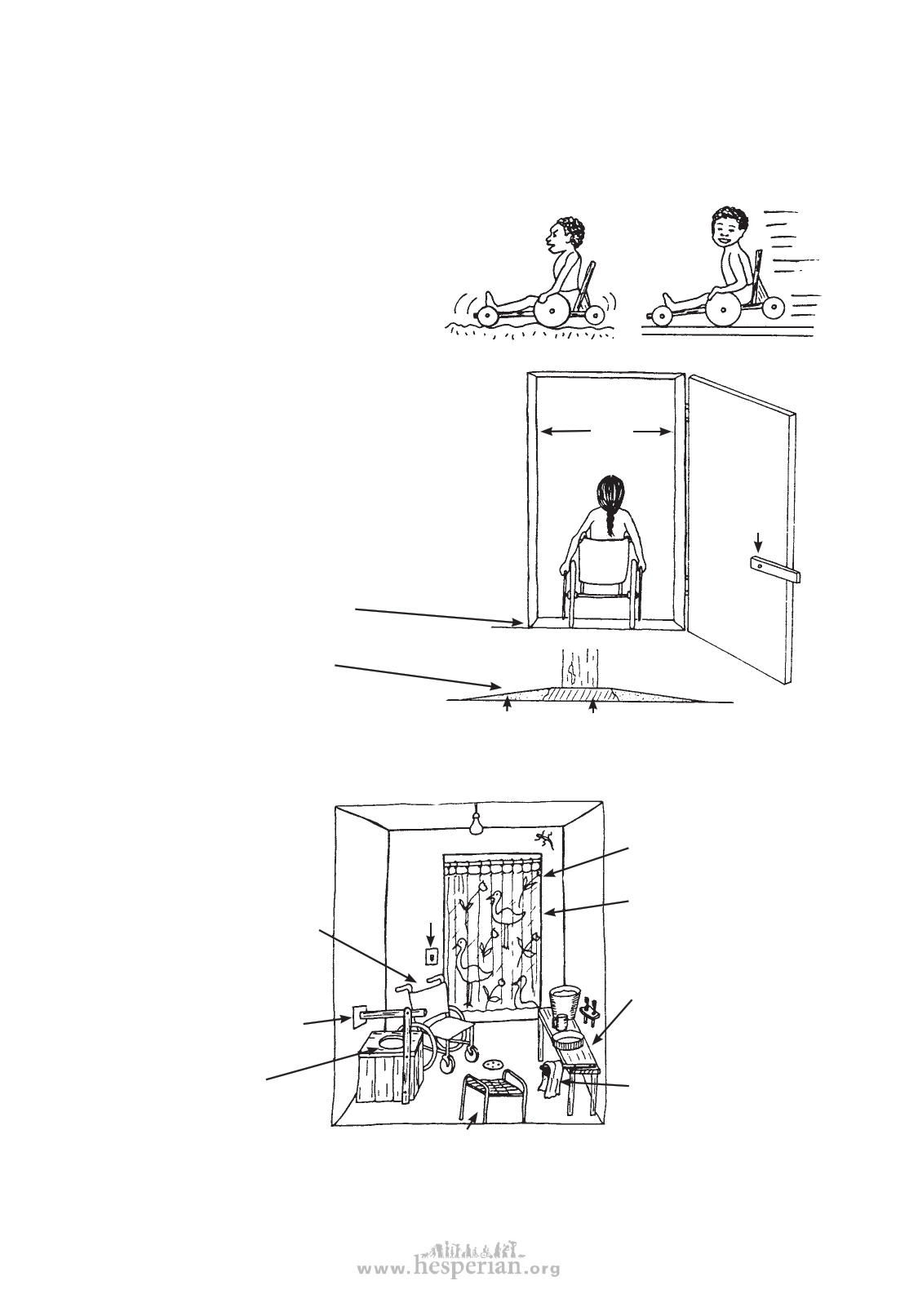
Home adaptations for wheelchair riders
ADAPTING THE HOME AND COMMUNITY 487
FLOORS
For almost any disabled person—but
especially those who use wheelboards or
scooters with small wheels, the floor should
be as smooth and firm as possible (but not
slick or slippery). Packed, smoothed clay-
and-cow-dung surfaces (as used in India) work
well. Cement is even better for long-lasting
use of a trolley or wheelchair. Although
expensive, a smooth cement floor makes
getting around a lot easier.
NO
THANKS!
YES
PLEASE!
DOORWAYS
Make all doorways extra wide.
Remember, your child will grow and may
need a bigger, wider wheelchair.
In a house that already has very
narrow doorways, be sure the wheelchair
you buy or make is narrow enough to fit
through easily. Most commercial chairs
are much wider than necessary,
especially for a child.
Try to avoid any rise or bump at
the doorway. If it already has a
raised sill and you cannot remove it,
build a small ramp to go over it.
(This will be of special help for
children with weak arms and
hands).
small ramp
BATHROOM OR OUTHOUSE (LATRINE)
extra
wide
door sill
Put latches
and door
handles low
enough for
easy reach.
Be sure the room is big
enough for a wheelchair to
turn around in easily.
A wheelchair without armrests
or with a removable armrest
is best for transferring to the
toilet.
hand rail on far side
from wheelchair
toilet seat the
same height as
seat of wheelchair
low
switch
bathing stool same height as
wheelchair, with metal frame
and woven plastic or rubber
strips of car inner tube
wide
doorway
For a wheelchair
rider, a curtain is
often easier to open
and close than a door.
washstand
at height just
above knees of
wheelchair rider
towel on
low rack
disabled village children